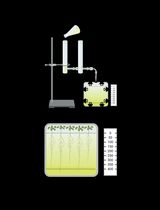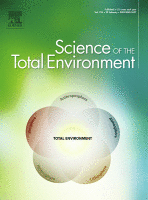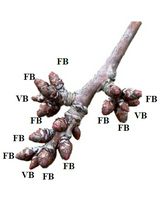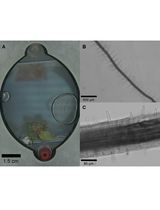- EN - English
- CN - 中文
Design and Construction of Repacked Soil Columns for Measuring Solute Transport, Plant Growth and Soil Biota
用于测量溶质迁移、植物生长和土壤生物区系的重装土柱的设计和建造
发布: 2021年01月20日第11卷第2期 DOI: 10.21769/BioProtoc.3884 浏览次数: 3675
评审: Nayidu NaghabushanaShahin S. AliAnonymous reviewer(s)

相关实验方案

利用体外渗透梯度实验系统评估拟南芥主根对渗透胁迫的响应生长
Selene Píriz-Pezzutto [...] Mariana Sotelo-Silveira
2025年07月20日 1765 阅读
Abstract
Researchers face a number of challenges in the construction of soil columns which can affect the outcome of their experiments. The use of intact soil cores closely mimics actual field conditions. However, the excavation of large intact soil cores is a time-consuming, labor-intensive process and may lead to soil compaction that would influence the solute transport behavior of the soil column. Repacked soil columns are used as an option to circumvent these challenges of intact soil cores. However, repacked soil columns also have their limitations and introduce other challenges. Here, we present a step by step procedure for the design of repacked soil columns to achieve a realistic bulk density, prevent preferential flow paths, and ensure hydraulic connectivity between soil layers. This protocol will be beneficial to Soil Scientists, Hydrologists and other Environmental Scientists utilizing repacked soil columns.
Keywords: Soil columns (土柱)Background
Soil columns play important roles in experimental set up for monitoring the fate and mobility of solutes such as contaminants and nutrients. They are also used in evaluating solute transport models. Soil columns are used widely in studies on the fate and transport of nutrients, pesticides, microbes, and heavy metals (Lewis and Sjöstrom, 2010).
Specifically, soil columns have been used in several studies including leaching of pharmaceuticals (Oppel et al., 2004), response of root growth to soil compaction levels (Tracy et al., 2012), dissolved organic carbon and nitrate fluxes (Eykelbosh et al., 2015), fate of organic micropollutants (Banzhaf and Hebig, 2016), and modelling of micropollutants to simulate riverbank filtration (Bertelkamp et al., 2016).
The experimental setup has a great influence on the outcome of soil column studies (Bromly et al., 2007). Therefore, it is very vital to design soil columns in such a way as to overcome associated challenges and minimize any potential source of bias (Weihermuller et al., 2007). The purpose of this protocol is to provide a step-by-step guidance in the construction and use of repacked soil columns to obtain reproducible experimental outcomes.
Materials and Reagents
- PVC pipes (e.g., sewer pipes having a thickness of 4.1 mm)
- Silicon sealant and gun
- Coarse textured Sandpaper
- 35-micron nylon mesh
- Measuring tape
- Syringe (10 ml)
- Measuring cylinder
- Collection trays
- Supporting trays
- Rhizon MOM (from Rhizosphere.com, catalogue number 19.21.21F )
- Buckets
- Ryegrass (or the plant of your interest)
- Soil
- 100 seeds of perennial ryegrass (Lolium perenne)
- Water
Equipment
- Hand drill with various size bits (e.g., 0.5 mm, 1 mm)
- Saw
- 3.35 mm mesh size sieve (depending on the purpose of the experiment)
- Shovel
Procedure
文章信息
版权信息
© 2021 The Authors; exclusive licensee Bio-protocol LLC.
如何引用
Ikoyi, I. O. and Schmalenberger, A. (2021). Design and Construction of Repacked Soil Columns for Measuring Solute Transport, Plant Growth and Soil Biota. Bio-protocol 11(2): e3884. DOI: 10.21769/BioProtoc.3884.
分类
植物科学 > 植物生理学 > 植物生长
您对这篇实验方法有问题吗?
在此处发布您的问题,我们将邀请本文作者来回答。同时,我们会将您的问题发布到Bio-protocol Exchange,以便寻求社区成员的帮助。
提问指南
+ 问题描述
写下详细的问题描述,包括所有有助于他人回答您问题的信息(例如实验过程、条件和相关图像等)。
Share
Bluesky
X
Copy link


.jpg)








